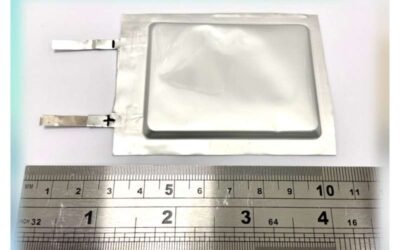Metasurfaces, two-dimensional (2D) or planar versions of metamaterials exhibit properties that are not typically found in natural materials. As they are flat, these materials can typically be produced using widely known fabrication processes and may help to control...
Electronics & Semiconductors
A squid-inspired artificial skin that endures harsh environments
Countless hardware and software solutions created over the past decades draw inspiration from animals and natural phenomena. This includes electronic skins (e-skins), flexible and stretchable electronic circuits designed to replicate the human sense of touch or...
Aluminum-based low-loss interconnects for superconducting quantum processors
Quantum processors are computing systems that process information and perform computations by exploiting quantum mechanical phenomena. These systems could significantly outperform conventional processors on certain tasks, both in terms of speed and computational...
The large-area synthesis and transfer of multilayer hBN for fabricating 2D electronics
Researchers at Kyushu University, the National Institute of Advanced Industrial Science and Technology (AIST) and Osaka University in Japan have recently introduced a new strategy for synthesizing multi-layer hexagonal boron nitride (hBN), a material that could be...
Non-reciprocal acoustoelectric amplifiers for very high frequency sound waves
In recent years, teams of engineers worldwide have been trying to develop acoustic devices based on piezoelectrics (i.e., materials that can produce electricity when mechanical stress is applied to them) integrated with conventional semiconductors. These devices could...
Using a solidified liquid metal to build 3D flexible electronics
In recent years, engineers and material scientists have been trying to identify particularly promising materials for creating flexible electronics of different shapes and sizes. Ultimately, these electronics could be integrated in wearable devices (e.g., smart watches...
A new elastic polymer dielectric to create wafer-scale stretchable electronics
Over the past few years, material scientists and electronics engineers have been trying to fabricate new flexible inorganic materials to create stretchable and highly performing electronic devices. These devices can be based on different designs, such as rigid-island...
Highly performing lithium sulfur batteries based on metallic molybdenum disulfide nanosheets
To reduce carbon emissions and still meet the growing demands of the electronics industry, scientists will need to develop alternative battery technologies that are more durable, sustainable, and can store more energy. In recent years, they have thus been trying to...
A system to enable multi-kilometer and sub-terahertz communications at extremely high frequency bands
After the introduction of the fifth-generation technology standard for broadband cellular networks (5G), engineers worldwide are now working on systems that could further speed up communications. The next-generation wireless communication networks, from 6G onward,...
A method to reliably fabricate transition metal dichalcogenide field-effect transistors on a wafer-scale
Electronics engineers are continuously trying to develop thinner, more efficient and better performing transistors, the semiconductor devices at the core of most modern electronics. To do this, they have been evaluating the potential of a broad range of materials.










